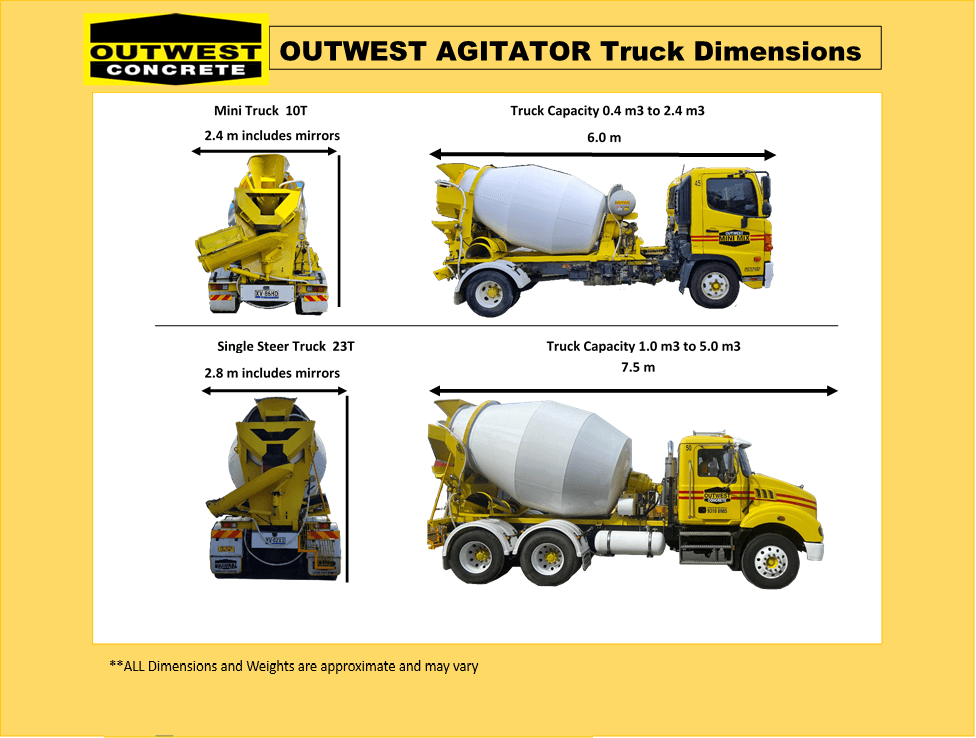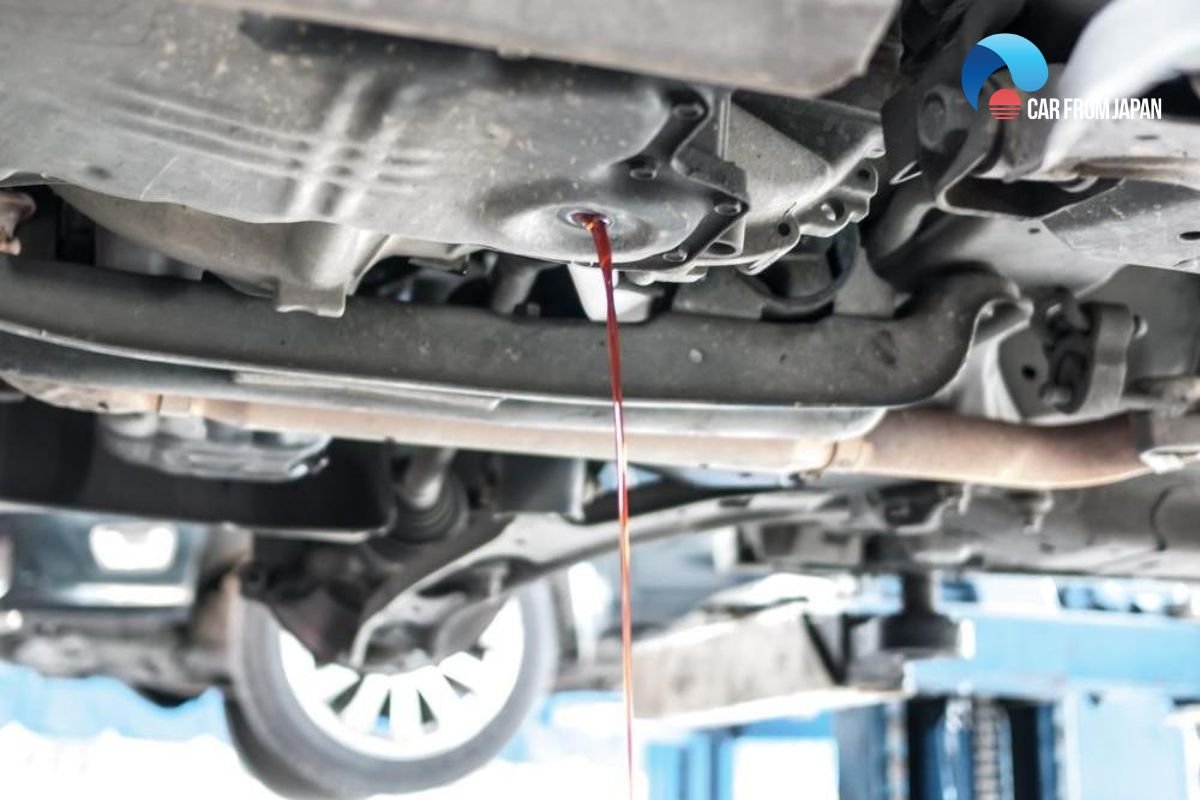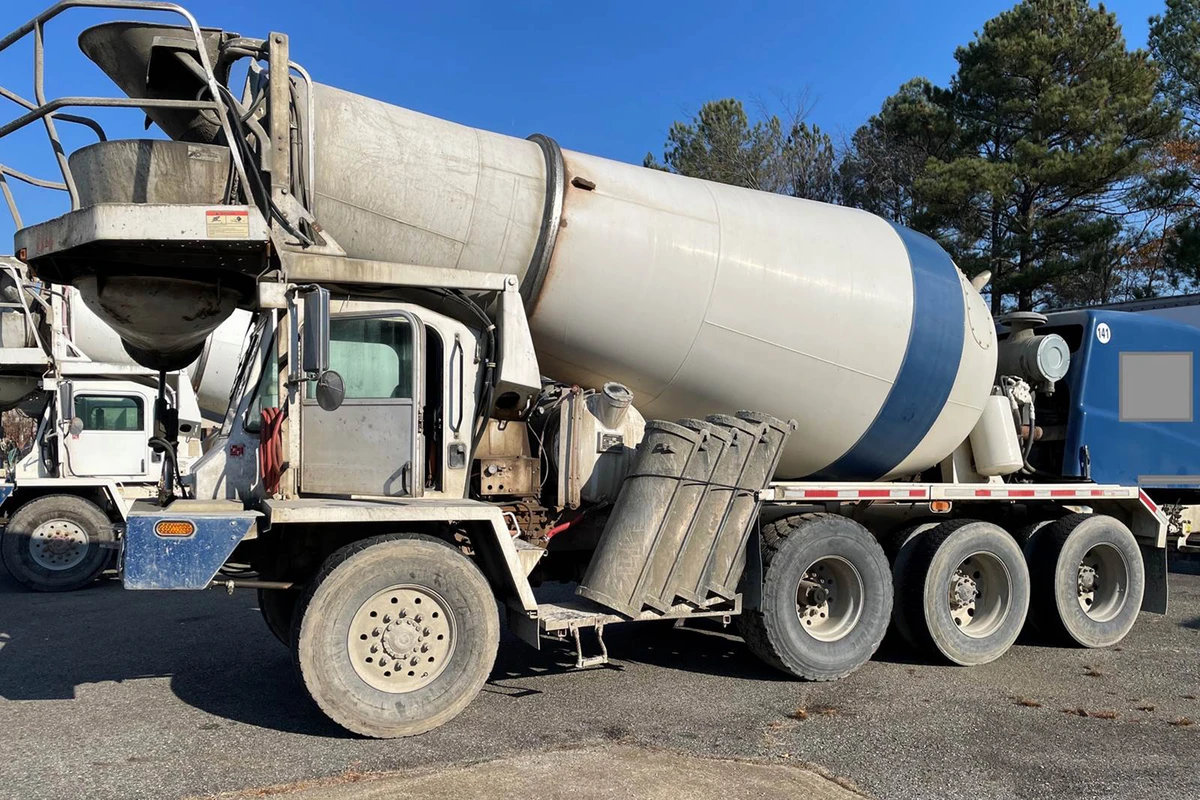Have you ever seen a massive concrete mixer rolling down a narrow street and thought, how wide is a concrete truck, anyway? It’s a fair question—and one that matters more than most people realize. Whether you’re a contractor preparing for a pour, a homeowner planning a driveway project, or an engineer managing site logistics, knowing the dimensions of a concrete truck can prevent delays, accidents, and unnecessary costs.
This guide breaks down everything you need to know: from average truck widths and legal limits to real-world delivery tips for tight job sites. Let’s dive in.
Why Knowing the Width of a Concrete Truck Matters
A concrete mixer truck isn’t just any vehicle—it’s a large, specialized machine designed to transport heavy, rotating loads safely. But its size also makes it tricky to maneuver.
Understanding its width is essential for:
- Contractors: Ensuring the truck can access construction zones without damaging formwork or site boundaries.
- Homeowners: Determining if the vehicle can fit through a residential gate or driveway.
- Engineers: Calculating clearance space for safe entry and exit routes.
- Logistics planners: Avoiding fines or delivery delays caused by road restrictions.
Imagine this: A concrete supplier arrives at a site only to discover the gate is six inches too narrow. The driver can’t enter, the mix starts setting, and the entire pour gets delayed. One simple measurement could’ve prevented that.
Standard Concrete Truck Dimensions (Width, Length, Height, and Capacity)
Concrete trucks come in various configurations depending on load capacity, manufacturer, and region. However, most standard mixer trucks have a width between 8 and 9 feet (2.4–2.7 meters)—close to the legal road limit in most countries.
Here’s a detailed comparison of typical dimensions:
| Type of Concrete Truck | Width (ft/m) | Length (ft/m) | Height (ft/m) | Capacity (Cubic Yards) |
| Standard Mixer Truck | 8.5 ft / 2.6 m | 30 ft / 9 m | 13 ft / 4 m | 8–10 cubic yards |
| Mini Concrete Truck | 7.2 ft / 2.2 m | 20 ft / 6 m | 10 ft / 3 m | 4–6 cubic yards |
| Front Discharge Truck | 8.8 ft / 2.7 m | 35 ft / 10.7 m | 13.5 ft / 4.1 m | 10–12 cubic yards |
Quick takeaway: Most concrete trucks are about as wide as a large delivery truck or semi-trailer, but taller and heavier due to the rotating drum.
Factors That Affect Concrete Truck Width
Not all concrete trucks are created equal. Several design and functional features influence their exact width:
- Truck Model and Chassis Design – Brands like Mack, Volvo, and Peterbilt each have slightly different chassis widths.
- Drum Size and Configuration – Larger drums for 10–12-yard trucks require broader bases for stability.
- Tire and Axle Setup – Dual rear tires extend outward, adding several inches.
- Safety Rails and Mirrors – Regulations require large mirrors and handrails, which can add to the overall span.
- Custom Modifications – Some companies add toolboxes, pumps, or ladders, further widening the vehicle.
Even a few extra inches matter, especially when entering tight urban job sites or residential areas.
Comparing Concrete Truck Width to Other Vehicles
To visualize the size difference, here’s how a typical mixer compares to other common work vehicles:
| Vehicle Type | Average Width |
| Mini Concrete Truck | 7.2 ft |
| Standard Concrete Truck | 8.5 ft |
| Dump Truck | 8 ft |
| Pickup Truck | 6.5 ft |
| Semi-Trailer | 8.5 ft |
Observation: Concrete trucks sit near the upper limit for road-legal widths, meaning there’s very little margin for error when navigating narrow roads or site entrances.
Legal Road Width Limits and Safety Regulations
Every country enforces specific width limits for heavy-duty vehicles. These limits exist to ensure safe passage on public roads and prevent structural damage to infrastructure.
Legal Width Limits by Region
| Region | Legal Max Width |
| United States | 8.5 ft (102 inches) |
| United Kingdom | 2.55 m |
| Australia | 2.5 m |
| Canada | 2.6 m |
| European Union | 2.55 m |
Interesting fact: These limits exclude mirrors and safety rails, meaning a concrete truck can appear slightly wider when mirrors are extended.
Safety Clearances and Turning Radius
Because of their size, concrete trucks require at least 10 feet of clear width to move comfortably and a turning radius of 25–30 feet. Always check:
- Gate width – Should be at least 1 foot wider than the truck.
- Overhead clearance – Watch for tree branches, power lines, or signage.
- Ground stability – Ensure the path is solid; trucks can weigh up to 60,000 pounds when fully loaded.
How to Measure or Check the Width of a Concrete Truck
If you’re planning a pour, it’s smart to verify the exact truck dimensions before delivery. Here’s how:
- Check the Manufacturer’s Specifications – The width, length, and weight are listed in the owner’s manual or VIN plate.
- Contact the Supplier – Ask for the model and dimensions of the truck scheduled for your job.
- Measure On-Site – Use a tape measure or laser to confirm your gate or driveway width.
Pro tip: Always plan for a minimum of 12 inches of clearance on either side of the truck for safe passage.
Narrow Site? Here’s What to Do
Not every project has the luxury of wide driveways or open access. Urban sites often challenge even experienced drivers.
Use Mini or Compact Concrete Trucks
Mini mixers are a lifesaver for tight spaces. They’re smaller, lighter, and can maneuver through narrow alleys or residential streets.
Advantages:
- Can access tighter spaces (as narrow as 7 feet)
- Reduced ground pressure
- Ideal for small pours or domestic projects
Disadvantages:
- Smaller capacity (4–6 yards)
- May require multiple trips
Alternative Options When a Full-Size Truck Can’t Fit
If access is impossible, you still have options:
- Concrete Pumps: Extend reach up to 100 feet or more, keeping the truck at a distance.
- Wheelbarrow Offloading: Useful for short distances (under 50 feet).
- Portable Mixers: Best for very small projects where delivery isn’t feasible.
Case Study:
During a home renovation in Melbourne, a contractor needed 6 yards of ready-mix concrete delivered through a 7.5-foot-wide alley. The standard truck couldn’t enter, so they opted for a mini mixer with a concrete pump. The pour finished on time, with zero property damage or spillage.
FAQs About Concrete Truck Dimensions
Here are answers to some of the most common questions people ask:
- How wide is a 10-yard concrete truck?
A 10-yard truck is typically 8.5–9 feet wide and around 30 feet long. - Can a concrete truck fit in a residential driveway?
Most residential driveways are 8–10 feet wide, so it’s possible—but tight. Always allow at least 1 foot of clearance on both sides. - What is the minimum gate width for safe entry?
A minimum of 9 feet is recommended, but 10 feet is safer, especially if the truck needs to turn. - How tall is a concrete truck when discharging?
With the chute raised, it can reach up to 13.5–14 feet, so check for overhead wires or branches. - How much space does a truck need to turn?
A full-sized mixer typically needs a 25–30 foot turning radius.
Tips for Planning Concrete Deliveries
A little preparation goes a long way in ensuring a smooth concrete delivery.
Before the Truck Arrives:
- Measure all access points including gates, fences, and driveways.
- Remove obstacles such as vehicles, bins, or low-hanging wires.
- Check weather conditions—wet or muddy ground can make maneuvering difficult.
- Communicate with your supplier about your site layout.
During Delivery:
- Guide the driver slowly through tight areas.
- Keep a spotter at blind corners.
- Ensure workers stay clear of moving equipment.
After the Pour:
- Clean off any concrete splatter before it hardens.
- Inspect driveways or pavements for tire indentations.
A thoroughly organized location conserves resources, finances, and cement.Planning access is just as critical as planning the pour.”
Summary — Understanding Concrete Truck Widths for Safer, Smarter Planning
Let’s recap the key insights:
- Average width: 8–9 feet (2.4–2.7 meters)
- Legal limit: Around 8.5 feet in most regions
- Safe clearance: At least 1–2 feet on each side
- Mini trucks: Ideal for tight or residential spaces
- Proper planning: Prevents damage, delays, and delivery issues
Whether you’re building a patio or a multi-story structure, one thing remains constant—space matters. Measure twice, plan ahead, and ensure your site can accommodate the delivery truck safely.
Final Word:
Before your next pour, take a moment to confirm your access width. A few simple measurements can make the difference between a seamless delivery and a concrete catastrophe.












Leave a Reply